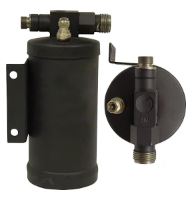
The Components of an Automotive Air Conditioning System
June 4, 2020 5:56 pmAs a car owner in the South, you understand the importance of having working air conditioning in your vehicle. But how much do you know about how that air conditioning system operates?
There are several main types of automotive air conditioning systems: orifice tube systems and expansion valve systems are the most common, or you can find combinations of the two. In any case, to understand how your Madison, TN car’s AC works, you need to know each of the components and how they contribute to that operation. Those primary components are the compressor, condenser, evaporator, accumulator (or receiver-drier) and orifice tube (or expansion valve).
Here’s an overview of what you should know about air conditioning operation and how each of these components contribute to the cooling of your vehicle cabin.
How does a car’s AC work?
Here’s a quick rundown of how each part of a car’s AC contributes to air conditioning operation in Madison, TN:
- Refrigerant: The air conditioning system gets filled with refrigerant gas known as Freon or R135A. Refrigerant has the ability to change its physical properties during compression, which, as you’ll see momentarily, is crucial to the operation of an air conditioning system.
- Compressor: The refrigerant gets turned into liquid by the compressor, which, as the name suggests, compresses that refrigerant. As the gas gets compressed, it heats up, at which point it gets sent to the condenser.
- Condenser: The condenser is where the refrigerant gets cooled. This component features a section of coils that air from outside passes over, removing the heat from the compressed gas. This results in the gas cooling and condensing into a liquid state.
- Accumulator: The accumulator (also referred to as a receiver-drier) is a canister in the air conditioning system that features a desiccant to absorb moisture. This part may have a sight glass on the top of it, allowing you to observe flow. This is the part that results in the air entering your vehicle having low humidity levels.
- Filter: Part of conditioning the air involves cleaning it. The air conditioner’s inline filter will remove any debris in the air, trapping it and allowing the clean air to continue passing through.
- Expansion valve: This part restricts the flow of refrigerant, causing it to change from a liquid at high pressure into a low-pressure mist before it goes into the evaporator.
- Orifice tube: An orifice tube is an alternative to an expansion valve that essentially creates the same refrigerant mist result.
- Evaporator: When the mist flows through the evaporator, a blower motor will push the air over the evaporator’s cold tubes to create cool air that then gets sent into the passenger compartment of your vehicle.
This should give you a general idea of the function of each of the parts of a car’s AC and how they contribute to the air conditioning process. For more information about air conditioning and vehicle components, or to schedule repairs or service, contact our experienced auto repair shop in Madison, TN today.
Categorised in: Auto AC Service
This post was written by Writer

Comments are closed here.